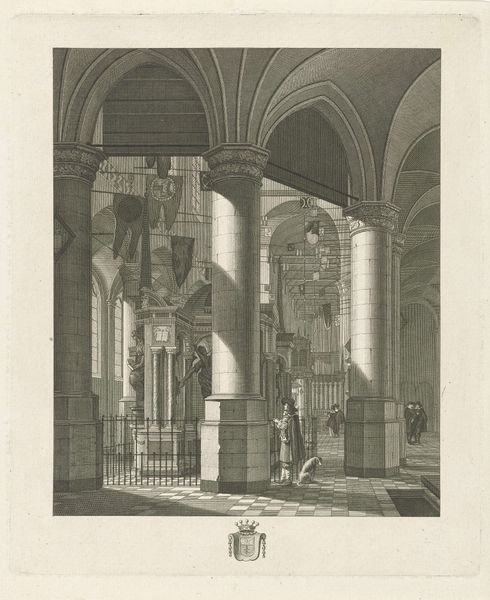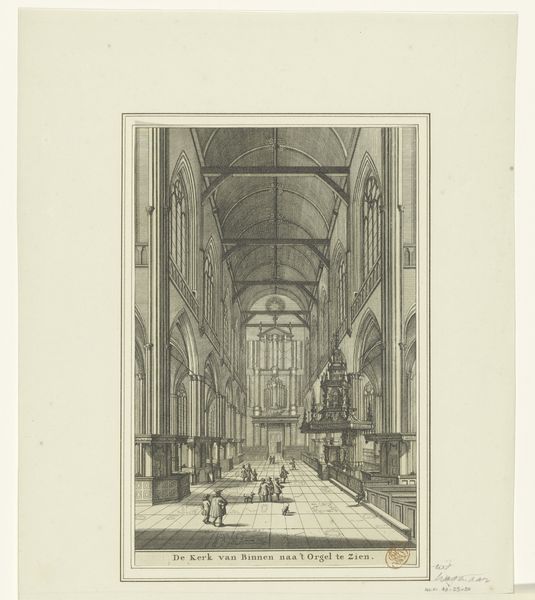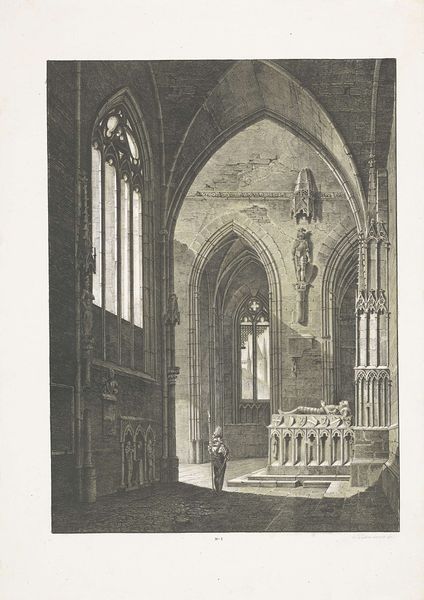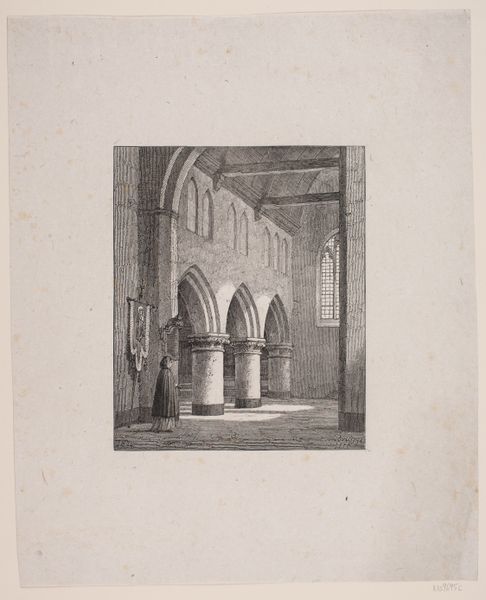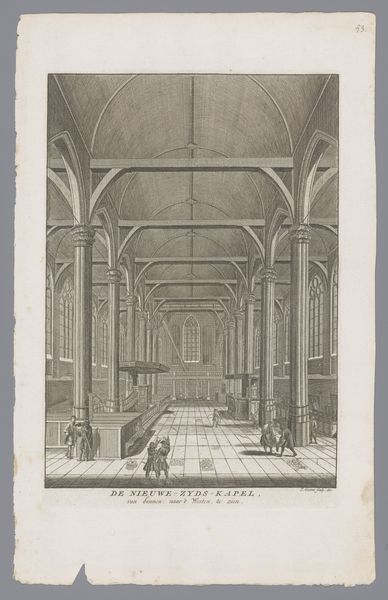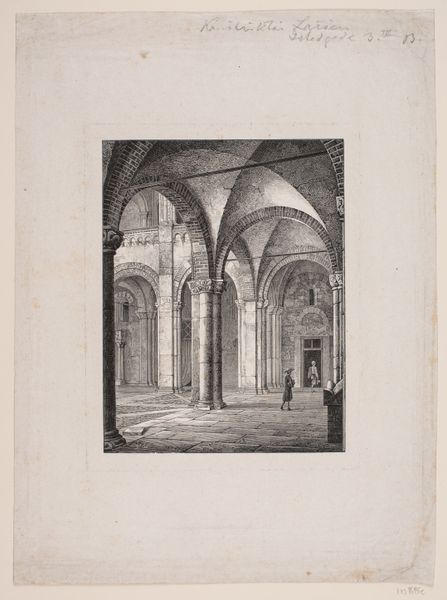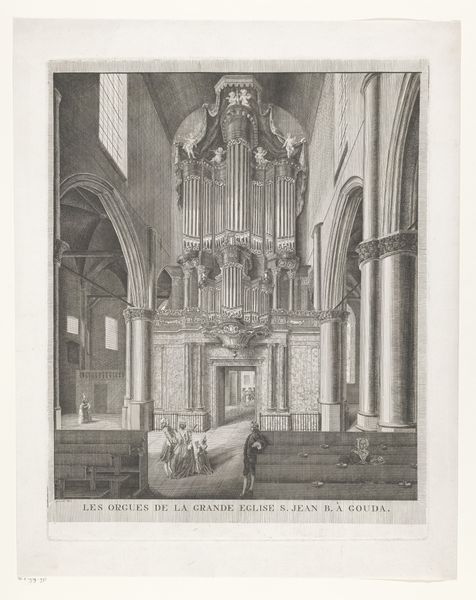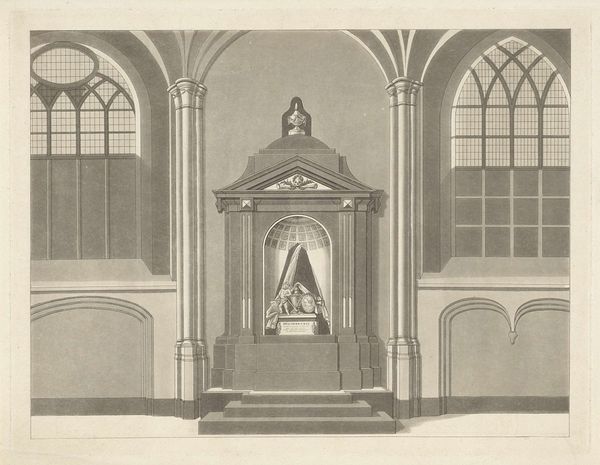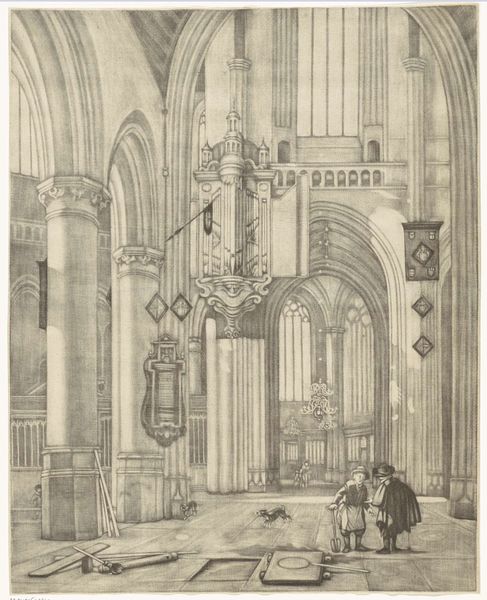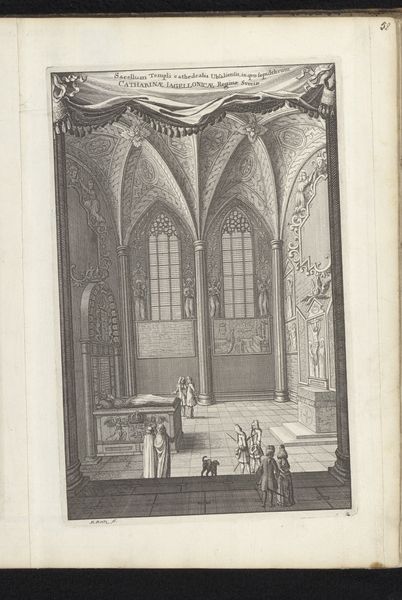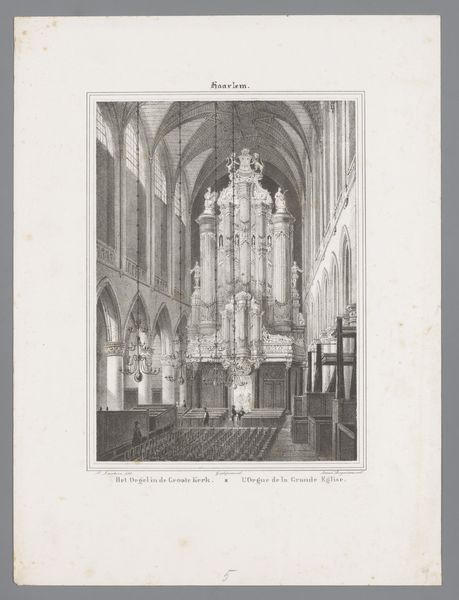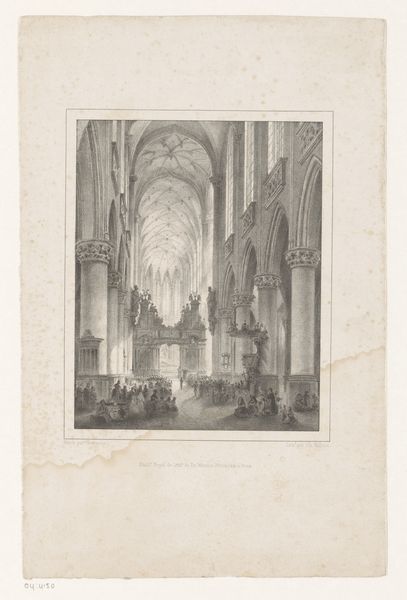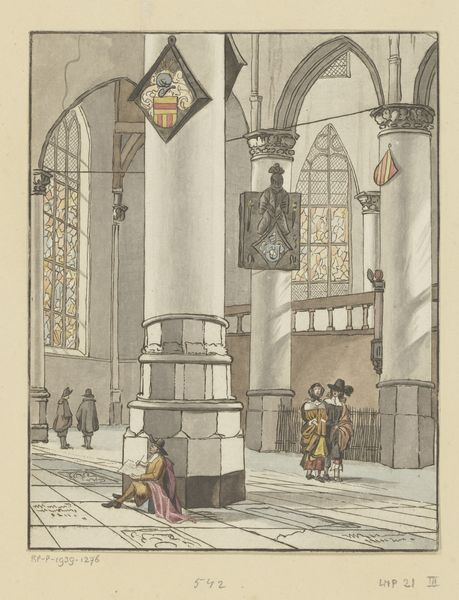
drawing, print, engraving
#
drawing
#
neoclacissism
# print
#
romanticism
#
cityscape
#
history-painting
#
engraving
Dimensions: height 178 mm, width 122 mm
Copyright: Rijks Museum: Open Domain
Curator: Jan Baptist Tetar van Elven created this engraving between 1831 and 1833, it is titled "Monument voor Jan Carel Josephus van Speijk". Editor: The print is rendered in very cool greys, almost ashen in quality. The composition centers a monument but it feels overshadowed by the vast architecture surrounding it. Curator: Yes, notice the meticulous engraving work to achieve that sense of scale and depth. Van Elven was very concerned with precision. Considering the labor involved in engraving those intricate lines for architectural accuracy tells us much about 19th-century printmaking's role in documenting and disseminating cultural and political narratives. Editor: I see how the crisp lines give a feeling of stark grandeur. Speaking of narratives, the historical context is quite complex here, isn't it? Jan van Speijk was a controversial figure in Dutch history, to put it mildly. His act, while seen as heroic by some, represents a very charged moment of colonial power. Curator: Absolutely. Consider the means by which images of figures like van Speijk circulated. These engravings like the monument itself became tools for constructing a certain national identity in post-Napoleonic Netherlands. We should also remember that printmaking enabled these heroic images to spread widely, molding popular opinions. Editor: It's intriguing to consider this in light of our own contemporary visual culture. What gets memorialized, how, and by whom – it’s all part of an ongoing conversation about historical narratives, especially in the face of the difficult legacies of colonialism. Even the decision to depict the monument within a massive church space underscores that this commemoration is tied to institutional power. Curator: Precisely. Examining such imagery compels us to question whose labor and stories were left out of this official historical record, whose voices were amplified by these engravings, and the underlying systems that sustained those choices. Editor: Definitely gives you pause, doesn’t it? Curator: Indeed. Looking closer helps us to ask the crucial questions around its making and lasting influence. Editor: Right, to see beyond the surface, as it were.
Comments
No comments
Be the first to comment and join the conversation on the ultimate creative platform.
